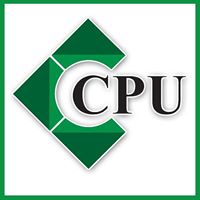Subscribe to the gold package and get unlimited access to Shamra Academy
Register a new userGeneralized bootstrap equations for N=4 SCFT
471
0
0.0
(
0
)
Ask ChatGPT about the research

No Arabic abstract
We study the consistency of four-point functions of half-BPS chiral primary operators of weight p in four-dimensional N=4 superconformal field theories. The resulting conformal bootstrap equations impose non-trivial bounds for the scaling dimension of unprotected local operators transforming in various representations of the R-symmetry group. These bounds generalize recent bounds for operators in the singlet representation, arising from consistency of the four-point function of the stress-energy tensor multiplet.
rate research
Read More
We formulate and discuss generalized bootstrap equations in nonabelian gauge theories. They are shown to hold in the leading logarithmic approximation. Since their validity is related to the self-consistency of the Steinmann relations for inelastic production amplitudes they can be expected to be valid also in NLO. Specializing to the N=4 SYM, we show that the validity in NLO of these generalized bootstrap equations allows to find the NLO Odderon solution with intercept exactly at one, a result which is valid also for the planar limit of QCD.
We propose that a certain $4d$ $mathcal{N}=1$ $SU(2)times SU(2)$ gauge theory flows in the IR to an $mathcal{N}=3$ SCFT plus a single free chiral field. The specific $mathcal{N}=3$ SCFT has rank $1$ and a dimension three Coulomb branch operator. The flow is generically expected to land at the $mathcal{N}=3$ SCFT deformed by the marginal deformation associated with said Coulomb branch operator. We also present a discussion about the properties expected of various RG invariant quantities from $mathcal{N}=3$ superconformal symmetry, and use these to test our proposal. Finally, we discuss a generalization to another $mathcal{N}=1$ model that we propose is related to a certain rank $3$ $mathcal{N}=3$ SCFT through the turning of certain marginal deformations.
We review the bootstrap method for constructing six- and seven-particle amplitudes in planar $mathcal{N}=4$ super Yang-Mills theory, by exploiting their analytic structure. We focus on two recently discovered properties which greatly simplify this construction at symbol and function level, respectively: the extended Steinmann relations, or equivalently cluster adjacency, and the coaction principle. We then demonstrate their power in determining the six-particle amplitude through six and seven loops in the NMHV and MHV sectors respectively, as well as the symbol of the NMHV seven-particle amplitude to four loops.
One can derive a large class of new $mathcal{N}=1$ SCFTs by turning on $mathcal{N}=1$ preserving deformations for $mathcal{N}=2$ Argyres-Dougals theories. In this work, we use $mathcal{N}=2$ superconformal indices to get indices of $mathcal{N}=1$ SCFTs, then use these indices to derive chiral rings of $mathcal{N}=1$ SCFTs. For a large class of $mathcal{N}=2$ theories, we find that the IR theory contains only free chirals if we deform the parent $mathcal{N}=2$ theory using the Coulomb branch operator with smallest scaling dimension. Our results provide interesting lessons on studies of $mathcal{N}=1$ theories, such as $a$-maximization, accidental symmetries, chiral ring, etc.
We compute, using the method of large spin perturbation theory, the anomalous dimensions and OPE coefficients of all leading twist operators in the critical $ O(N) $ model, to fourth order in the $ epsilon $-expansion. This is done fully within a bootstrap framework, and generalizes a recent result for the CFT-data of the Wilson-Fisher model. The anomalous dimensions we obtain for the $ O(N) $ singlet operators agree with the literature values, obtained by diagrammatic techniques, while the anomalous dimensions for operators in other representations, as well as all OPE coefficients, are new. From the results for the OPE coefficients, we derive the $ epsilon^4 $ corrections to the central charges $ C_T $ and $ C_J $, which are found to be compatible with the known large $ N $ expansions. Predictions for the central charge in the strongly coupled 3d model, including the 3d Ising model, are made for various values of $ N $, which compare favourably with numerical results and previous predictions.
Log in to be able to interact and post comments
comments
Fetching comments


Sign in to be able to follow your search criteria


